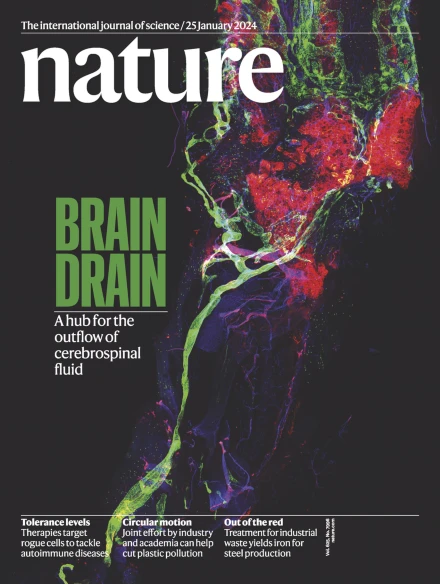In vivo haemopoietic stem cell gene therapy enabled by postnatal trafficking
IF 50.5
1区 综合性期刊
Q1 MULTIDISCIPLINARY SCIENCES
引用次数: 0
Abstract
Lentiviral vector (LV)-mediated ex vivo gene therapy for haematopoietic stem and progenitor cells (HSPCs) has delivered on the promise of a ‘one-and-done’ treatment for several genetic diseases1. However, ex vivo manipulation and patient conditioning before transplantation are major hurdles that could be overcome by an in vivo approach. Here we demonstrate that in vivo gene delivery to HSPCs after systemic LV administration is enabled by the substantial trafficking of these cells from the liver to the bone marrow in newborn mice. We improved gene-transfer efficiency using a phagocytosis-shielded LV, successfully reaching bona fide HSPCs capable of long-term multilineage output and engraftment after serial transplantation, as confirmed by clonal tracking. HSPC mobilization further increased gene transfer, extending the window of intervention, although permissiveness to LV transduction declined with age. We successfully tested this in vivo strategy in mouse models of adenosine deaminase deficiency, autosomal recessive osteopetrosis and Fanconi anaemia. Interestingly, in vivo gene transfer provided a selective advantage to corrected HSPCs in Fanconi anaemia, leading to near-complete haematopoietic reconstitution and prevention of bone marrow failure. Given that circulating HSPCs in humans are also most abundant shortly after birth, in vivo HSPC gene transfer holds strong translational potential across multiple diseases. In vivo gene delivery to haematopoietic stem and progenitor cells in newborn mice using engineered lentiviral vectors shows promise as an effective treatment for genetic diseases.


在体内造血干细胞基因治疗启用后出生贩运
慢病毒载体(LV)介导的造血干细胞和祖细胞(HSPCs)体外基因治疗已经实现了对几种遗传疾病“一次性”治疗的承诺1。然而,体外操作和移植前的患者调节是体内方法可以克服的主要障碍。在这里,我们证明了新生小鼠在全身左室给药后,通过将这些细胞从肝脏大量运输到骨髓,能够将体内基因传递到HSPCs。通过克隆跟踪证实,我们利用抗吞噬的LV提高了基因转移效率,成功地获得了能够长期多系输出和连续移植后植入的真正的HSPCs。HSPC的动员进一步增加了基因转移,延长了干预的窗口期,尽管对LV转导的允许度随着年龄的增长而下降。我们成功地在腺苷脱氨酶缺乏症、常染色体隐性骨质疏松症和范可尼贫血的小鼠模型中测试了这种体内策略。有趣的是,体内基因转移为范可尼贫血患者纠正的造血干细胞提供了选择性优势,导致近乎完全的造血重建和预防骨髓衰竭。鉴于人体内循环的HSPC在出生后不久也最丰富,体内HSPC基因转移在多种疾病中具有很强的翻译潜力。
本文章由计算机程序翻译,如有差异,请以英文原文为准。
求助全文
约1分钟内获得全文
求助全文
来源期刊

Nature
综合性期刊-综合性期刊
CiteScore
90.00
自引率
1.20%
发文量
3652
审稿时长
3 months
期刊介绍:
Nature is a prestigious international journal that publishes peer-reviewed research in various scientific and technological fields. The selection of articles is based on criteria such as originality, importance, interdisciplinary relevance, timeliness, accessibility, elegance, and surprising conclusions. In addition to showcasing significant scientific advances, Nature delivers rapid, authoritative, insightful news, and interpretation of current and upcoming trends impacting science, scientists, and the broader public. The journal serves a dual purpose: firstly, to promptly share noteworthy scientific advances and foster discussions among scientists, and secondly, to ensure the swift dissemination of scientific results globally, emphasizing their significance for knowledge, culture, and daily life.
 求助内容:
求助内容: 应助结果提醒方式:
应助结果提醒方式:


